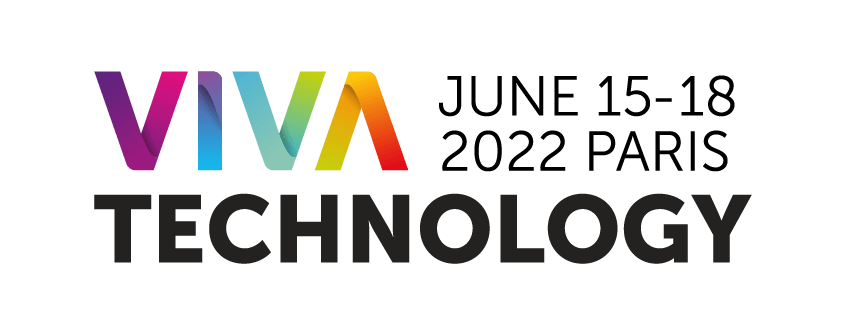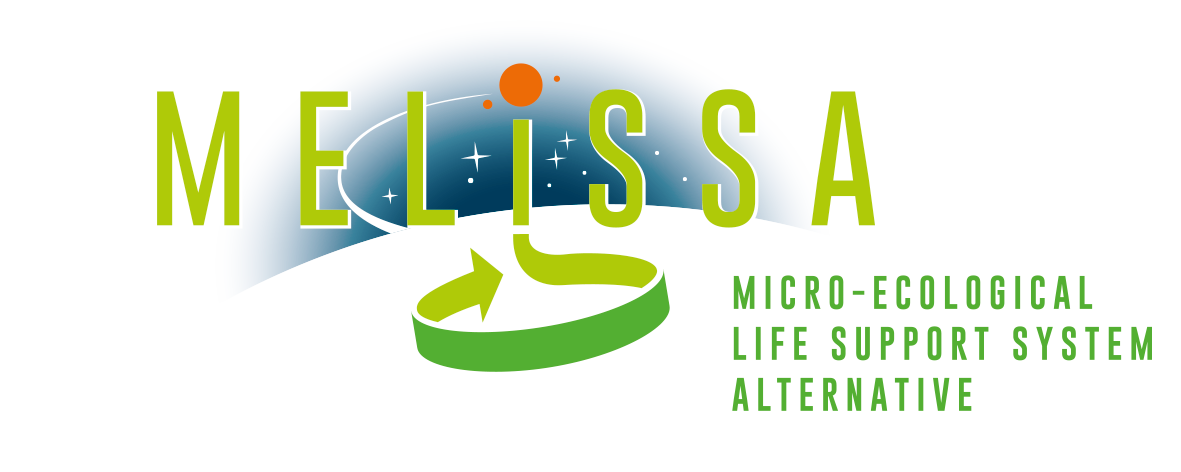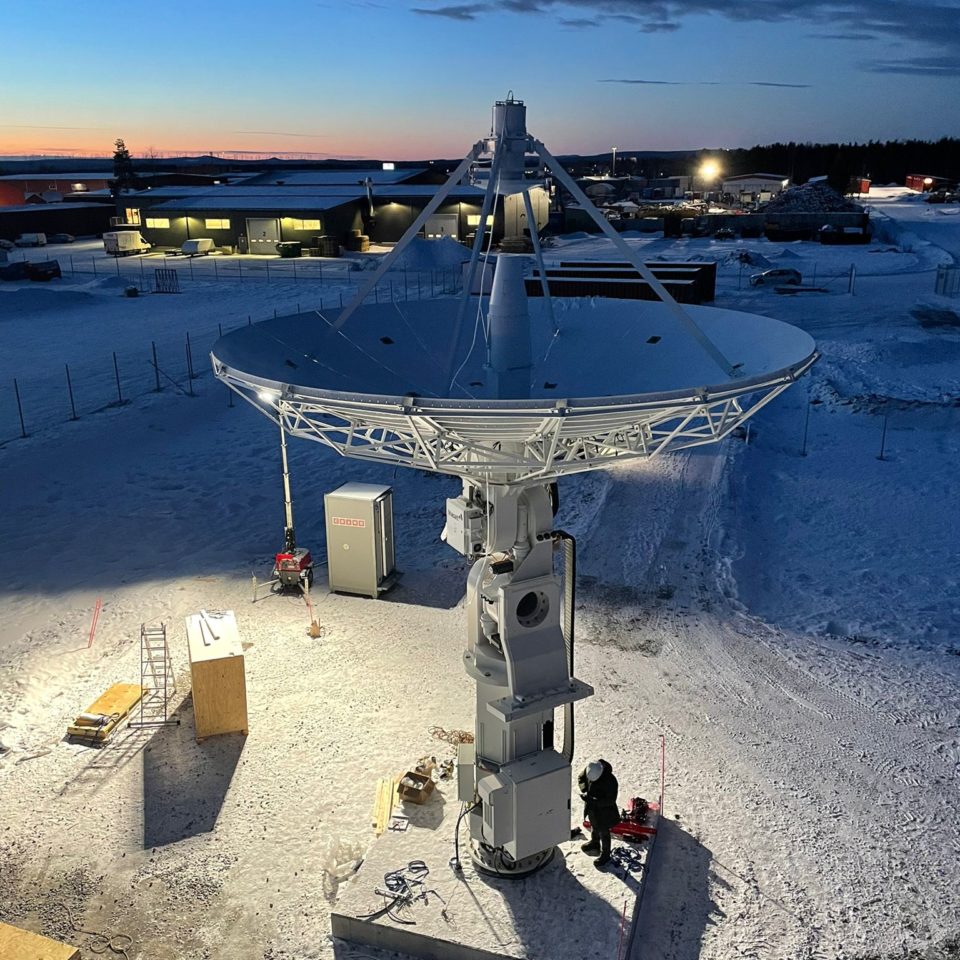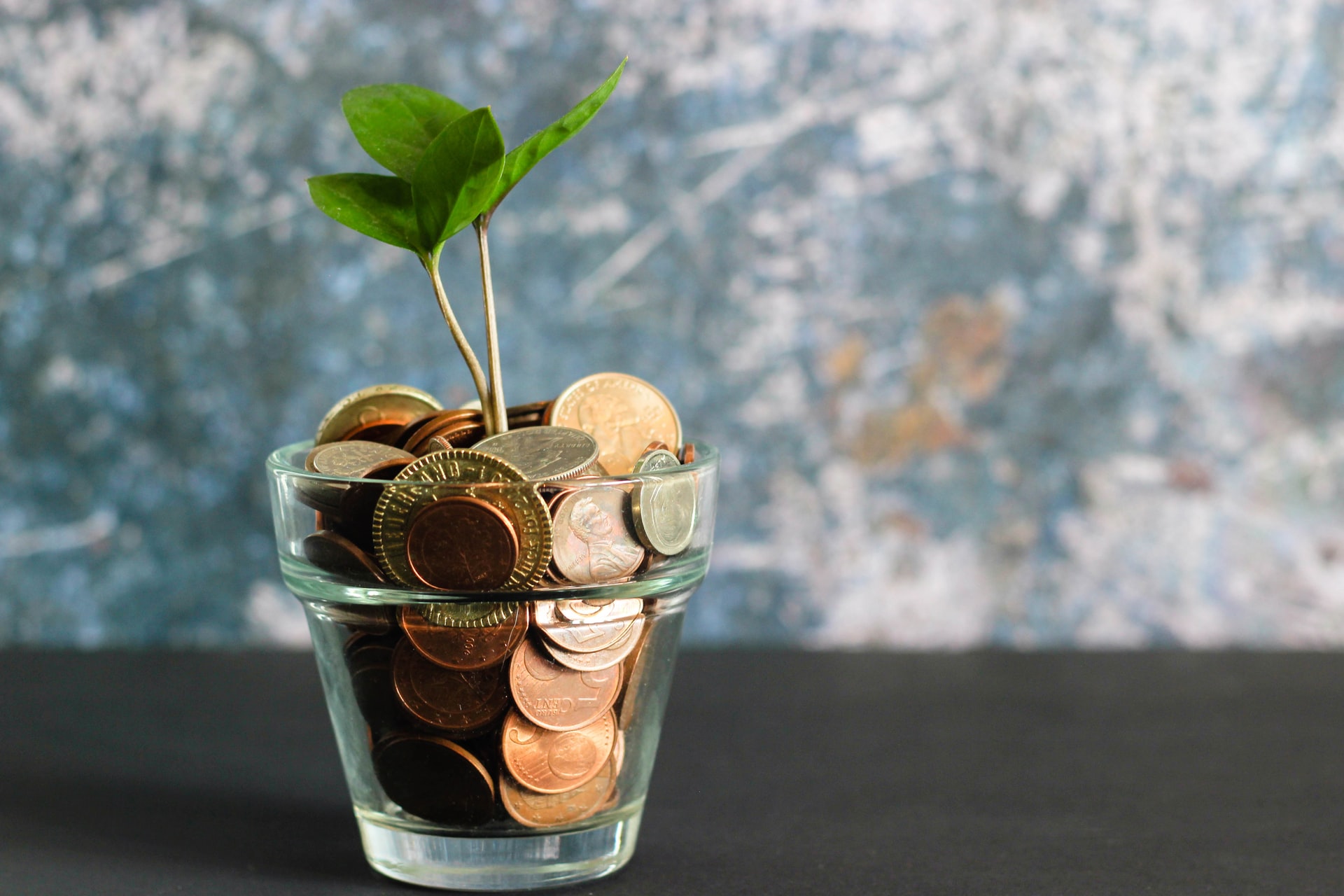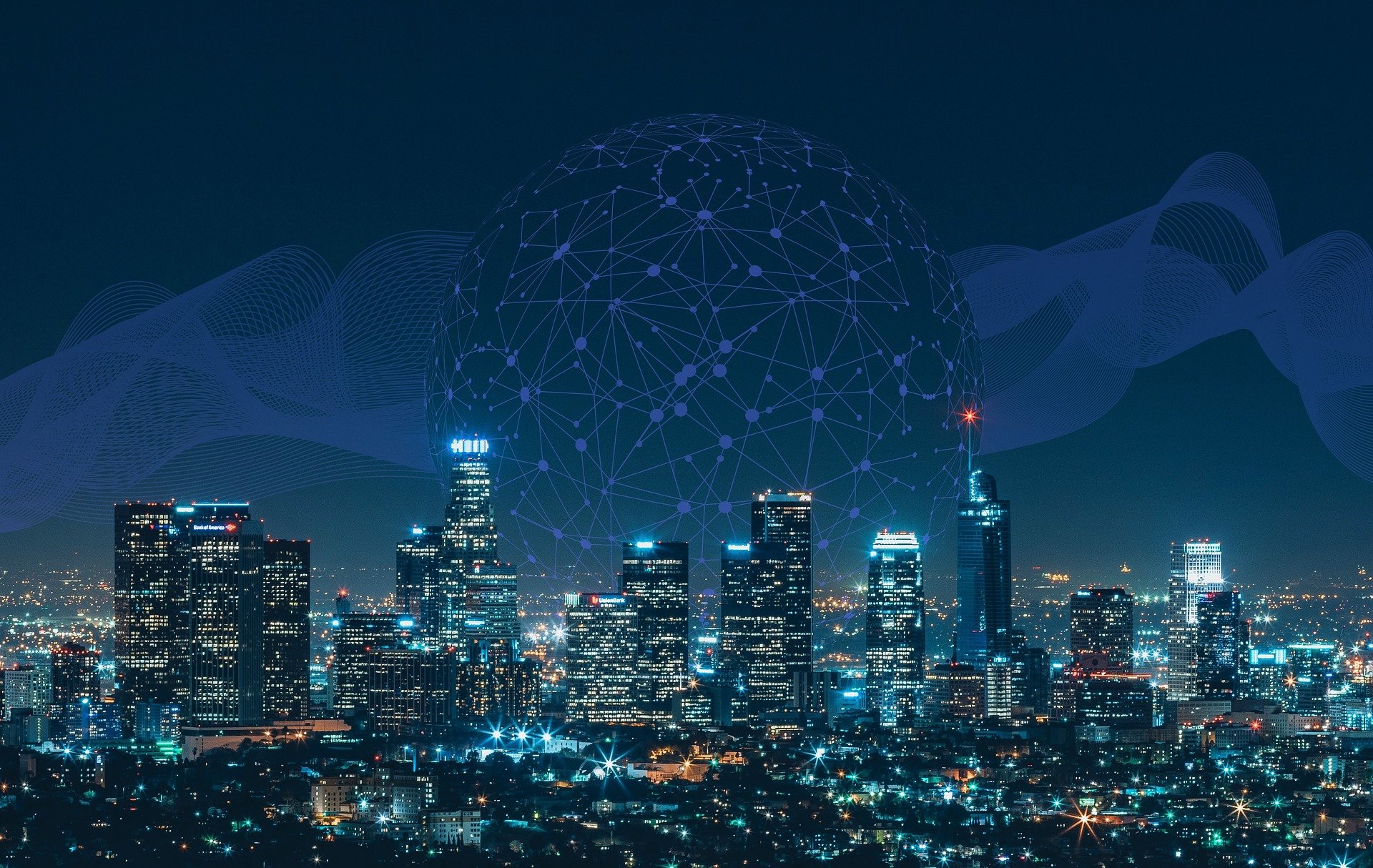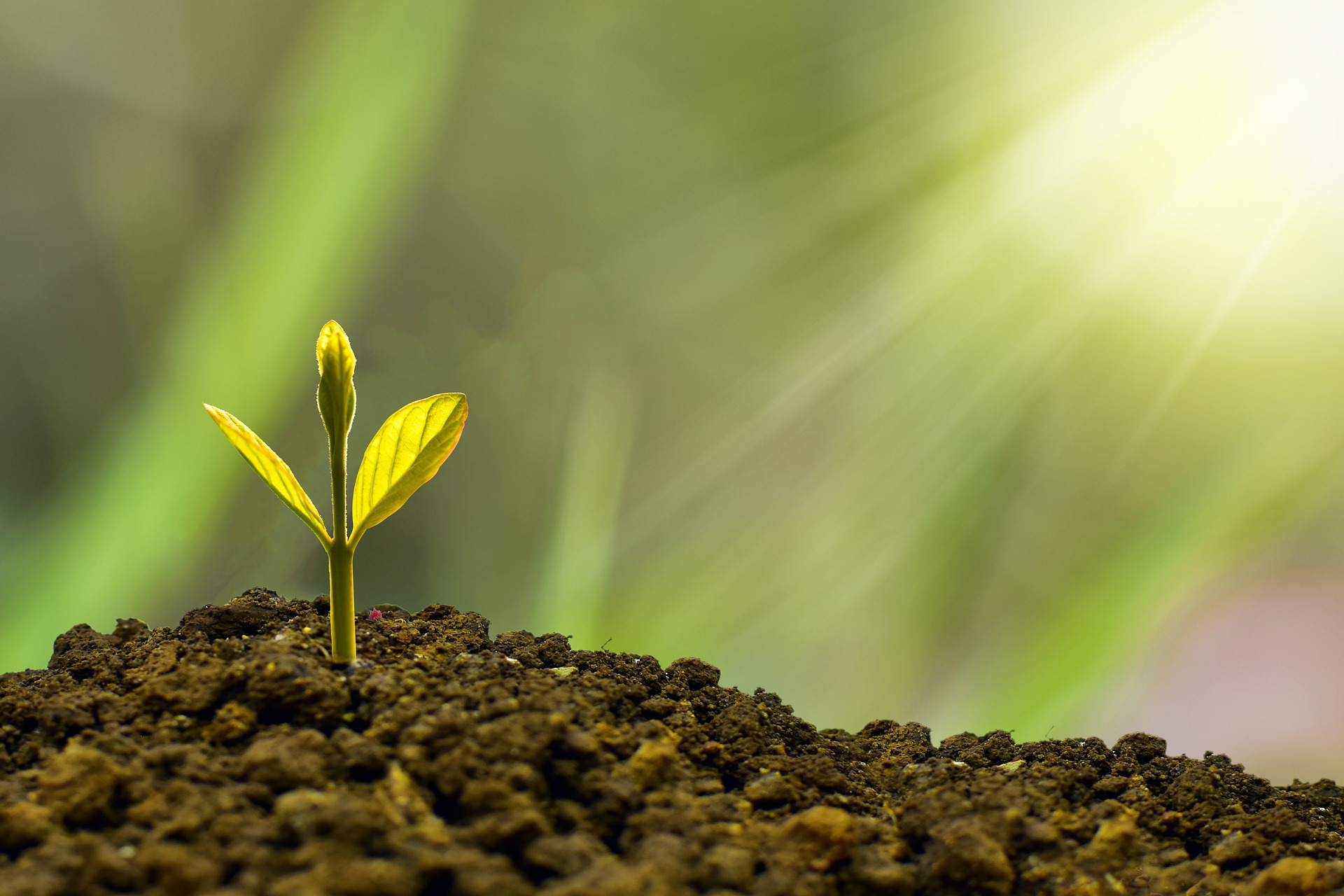Already today, cities consume 75% of the natural resources, produce 50% of the global waste, and emit 60-80% of the greenhouse gases (GHG). By 2050, two thirds of the population will live in cities around the world.
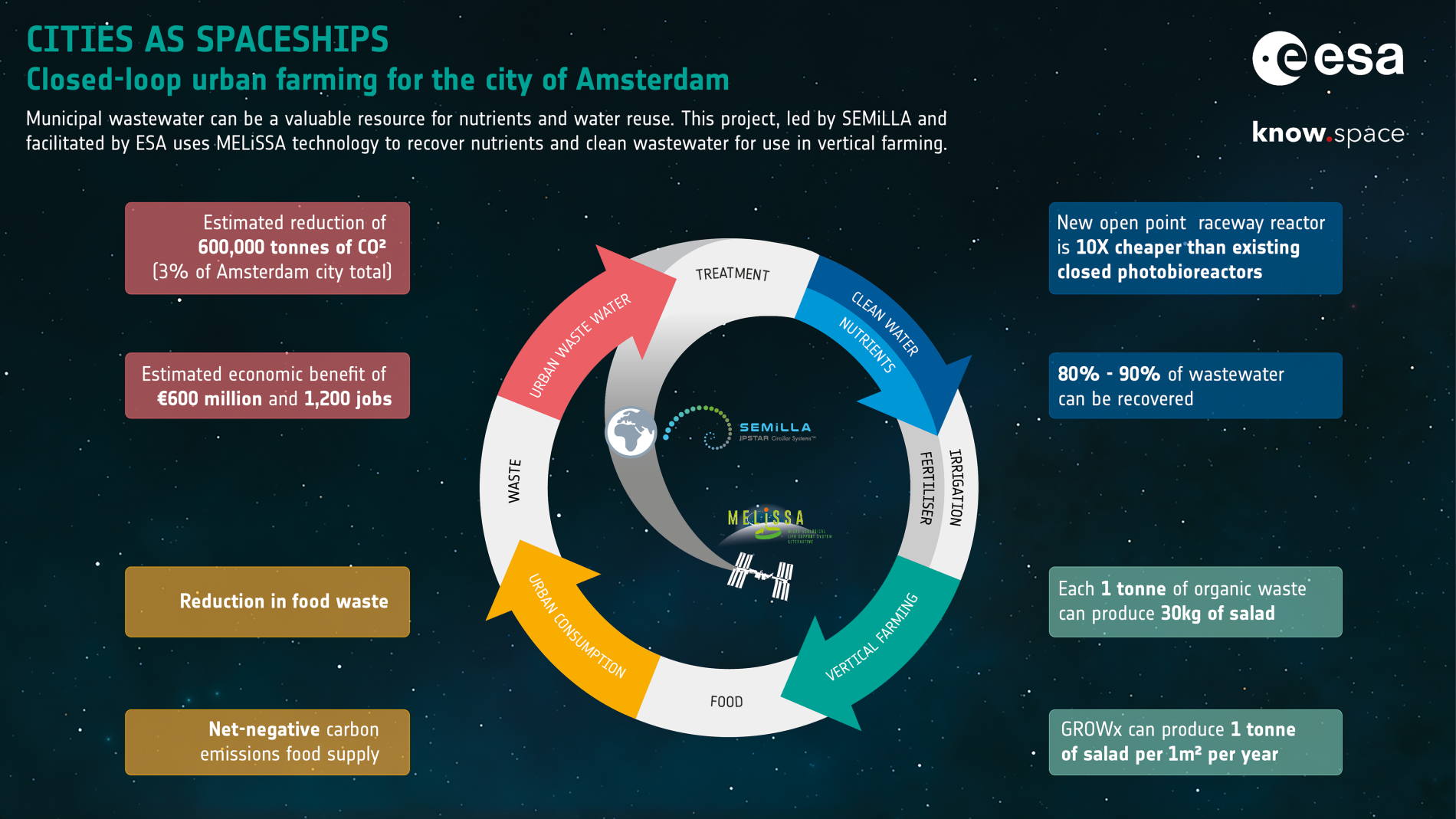
As cities embrace the circular economy model in an effort to be more sustainable, space technology applied to these terrestrial challenges can aid cities by providing resilient circular solutions and delivering significant socio-economic benefits. Resource circularity could be a game-changing technology in helping to tackle these growing environmental challenges. The application of circular systems in cities can also bring about a number of social and economic benefits, including sustainable water supply, increased and healthier food production, and greener cities.
On the International Space Station (ISS), orbiting 400km above the Earth, resources such as water, food and oxygen, are extremely precious. Even with ongoing technological innovation reducing the cost of launch significantly, commercial services currently deliver cargo to the ISS at a cost of $25,000/kg.3 For this reason, a closed-loop life support system that recycles waste into water and oxygen has been a fundamental aspect of life onboard the ISS for over twenty years.
THE MELISSA PROJECT
MELiSSA (Micro-Ecological Life Support System Alternative) is a European project running for more than 30 years within the European Space Agency (ESA), bringing many research institutes and organisations together to develop circular life support systems for the ISS and beyond. Through MELiSSA, organic and ceramic membranes were developed to filter astronauts’ wastewater, removing unwanted compounds, including nitrates. Furthermore, the project has been successful in using micro-organisms to process the waste to grow plants and food. Whilst work continues to increase the system efficiency towards 100% (a self-sustainable ecosystem that does not require resupply) for post-ISS habitats beyond Earth orbit, attention in recent years has turned to exploring how this technology can be adopted to benefit life on Earth. Many areas and aspects of life on Earth would greatly benefit from the ability to turn waste into resources, in turn enhancing our ability to meet global environmental and sustainability goals.
SPACE TECHNOLOGY BROUGHT DOWN TO EARTH
SEMiLLA IPStar (referred henceforth as SEMiLLA) is a MELiSSA technology transfer partner charged to test MELiSSA technologies for terrestrial applications and show that the impact goes beyond that of space applications. SEMiLLA applies MELiSSA technologies to Earth-based needs, including water treatment, waste management and recycling. SEMiLLA hope to provide an integrated waste management system to support the lifestyle of city inhabitants.
HELPING AMSTERDAM BECOME FULLY CIRCULAR BY 2050
Municipal wastewater is a great resource for nutrients and water reuse. This project, led by SEMiLLA and facilitated by ESA, aims to use MELiSSA technology to recover nutrients and clean wastewater for use in vertical farming. ESA are helping to tackle urban waste and food production challenges by helping leverage the photoheterotrophic compartment (C-II) of the MELiSSA loop, responsible for the elimination of the terminal products of the liquefying compartment of the system, for use as an urban waste solution for the Municipality of Amsterdam.
The Amsterdam Institute for Advanced Metropolitan Solutions (AMS Institute) is working with SEMiLLA on this project. The AMS Institute helps provide solutions to the complex problems faced in cities, by facilitating the integration of scientific, technological, and commercial capabilities and connecting academic, political and entrepreneurial minds. Amsterdam’s living labs initiative provides a testbed for developing new solutions, including SEMiLLA’s IPStar Circular System at the recently opened Marineterrein lab, which helps the city of Amsterdam quickly adopt new technologies to enable the city to reach the goal of becoming a fully circular city by 2050.
TURNING WASTE INTO RESOURCE
SEMiLLA identified a number of potential applications for using MELiSSA technology for Earth applications from an initial feasibility study. Purple Phototrophic Bacteria (PPB) was chosen for development as Proof of Concept. In nature, PPB proliferate in anaerobic lagoon and ponds and many other stagnant water environments. PPB was chosen because of their peculiar biomass composition, typically rich in protein and other chemical compounds such as carotenoids and quinones. The project successfully demonstrated the use of the PPB raceway reactor (used in the cultivation of algae) for purple bacteria cultivation on brewery and municipal yellow wastewater (urine).
The project to date has focused on two key areas: nutrient recovery and water treatment, using the C-II MELiSSA technology to help cities transition to a circular economy, developed by SEMiLLA through the Proof of Concept (PoC) process.
The project implemented a local modular biological wastewater treatment system to maximise the recovery of value in water and nutrients by the means of a raceway reactor system. In this project the reactor was fed with a mixture of brewery wastewater and urine. The brewery wastewater was used as the main carbon source for microbial growth, with urine used as the main nitrogen source.
ENABLING SEMILLA TO DEVELOP CIRCULAR SYSTEMS FOR EARTH
There are several socio-economic benefits that have already been realised in the initial stages of the technology development, with promise of many larger, global benefits to come as the SEMiLLA IPStar Circular System is scaled and becomes available to a wide range of users, from cities and utilities companies responsible for waste management, to buildings and companies seeking to reduce waste and lower energy costs.
IMPROVED TECHNOLOGY
As the SEMiLLA system develops, the direct link from MELiSSA (space) to SEMiLLA (Earth) starts to become a two-way feedback loop as the innovation development of SEMiLLA informs MELiSSA and thereby improves ESA’s closed-loop life support system for space. This feedback loop provides potential for future technology transfer between space and earth applications as the SEMiLLA technology matures.
COST EFFECTIVENESS
SEMiLLA have developed a new, open point, PPB raceway reactor, providing a solution that is on average ten times cheaper than existing closed photobioreactors reactors.
SEMiLLA adopt the same process as MELiSSA in using a natural conversion from waste to nutrients (not dependent on mechanical filtering) using microbes which act as a filter to purify specific elements within their cell. Existing reactors on the market isolate oxygen from the wastewater system and are thus very expensive to purchase and operate due to the complexities of separating oxygen from the system. Closed point reactors use anoxic conditions and have higher CAPEX and OPEX costs. As result, existing reactors present a cost-ineffective solution for small scale terrestrial circular systems, that simply cannot justify the high costs associated with in-space activities.
The new reactor, tuned and developed with the support of ESA, grows purple bacteria in an open point system for industrial microalgae cultivation, which is more cost-effective than existing reactors on the market. Adopting ESA’s MELiSSA technology, SEMiLLA, with the help of the University of Antwerp, have developed a new, open point, PPB raceway reactor, providing a solution that is on average 10 times cheaper than existing closed photobioreactors reactors.
NEW ECONOMIC ACTIVITY
There is a great opportunity for SEMiLLA to create a new product and commercial service that can be provided on the market to a global userbase. The raceway reactor is being developed to be sold as a standalone unit and the near-term goal is to develop a fully-fledged wastewater and nutrient recovery system, provided as a service.
There are very few commercial businesses that are validated in the market for nutrient recovery and water treatment, all in one. There are companies piloting systems, academic endeavours and R&D initiatives, including Cinderela which aims to recover nutrients from urine through distillation. The technology is a non-biological system, and it can be an alternative to the technical solution from the MELiSSA project, however, the SEMiLLA biological raceway reactor is different in the way it handles waste and the commercial viability is assumed higher due to lower energy needed to operate the system. In addition, the Cinderela project is an academic endeavour with less ambition to create a viable commercial offering. The partners in the project are also partners of SEMiLLA, which provides prospects for collaboration instead of competition.
Another project that is piloting in Amsterdam is the SEMiLLA Sanitation, which is a spin-off of SEMiLLA IPStar. Similar to the Cinderela project, distillation is used for nutrient recovery from urine collected from public urinals. This is again not a competitor but actually a gateway to including a higher range of solutions for wastewater treatment and nutrient recovery to be used in Amsterdam. The collaboration with the municipality can help bring the PPB reactor to the market faster.
NEW MARKET SEGMENTS
Development of a software tool to go with the new reactor makes it easier to implement for new and varied users. The software enables ongoing monitoring and the ability to adapt the reactor to specific requirements of the user and their typical waste stream. This is a critical step forward, as the waste stream of a brewery is different from an office building, and therefore the reactor can be more easily adopted by a wide range of users. Crucially the system does not interfere with existing wastewater systems, which is crucial for future implementation in cities at scale, such as in Amsterdam.
Whilst the reactor system is currently being tested and deployed for two specific applications, wastewater treatment and nutrient recovery, with support of specific partners, the system can be applied to new applications, such as applying the purple photoheterotrophic bacteria to cholesterol, and can benefit a wide range of users including: agri-food, life sciences, research institutes, municipalities, and building complexes.
SUSTAINABLE URBAN FOOD PRODUCTION
80%-90% of wastewater can be recovered as irrigation water for food production – on average 2kg of vegetables per person per day. Framed alternatively, each 1 tonne of organic waste can produce 30kg of salad. With many competing solutions for treating organic waste and wastewater, SEMiLLA’s distinguishing feature is that it is an end-to-end solution – an integrative approach undertaking both nutrient recovery and water treatment in one process – which is novel in the market and has proven to be attractive for a number of applications and users. The system can be installed as an ‘on the spot circular loop’ and thereby does not require extensive engineering to make it fit for purpose. Waste usually must leave big cities, whereas this biological, decentralised system creates a local solution to dealing with urban wastewater, enabling waste management within cities. There are huge economic benefits of zero waste of water, CO2, nutrients, and energy.
IMPROVED PRODUCT
Purple bacteria can be classed as a ‘super bacteria’ which deliver a very high quality microbial fertiliser and thereby high quality food products. Biomass fertiliser features 50-70% protein per gram (dry weight) and contains amino acids. For farmers and fisheries, using the microbial proteins from wastewater is able to improve the food sold, providing healthier food to customers.
Currently, the nutrient recovery process results in mixed fertiliser where nutrients are not separated. In the near future with further developments to the SEMiLLA IPStar Circular System, the hope is to be able to filter out and clean specific nutrients which can be inputted directly into plants, creating a fully closed-loop system.
The nutrients recovered can also be used as a microbial protein, rather than fertiliser, and used by farms and fisheries to stimulate animal growth. Microbial proteins, recovered from the system, have been shown to enhance shrimp and salmon production. Moving forwards, developing the waste proteins as biostimulants to trigger hormones that increase the wellbeing of plants offers huge potential for the agricultural industry.
INCREASED COMPETITIVENESS
The biomass fertiliser and microbial proteins are highly nutritious, in some instances removing the need to buy nutrients and thereby cutting costs. It is hoped that the fertiliser produced from the wastewater will become price-competitive with conventional fertiliser product sold on the market in the near future—creating a new source of revenue for vertical farms. There is a need for policy change to make the bacteria fertiliser competitive, as conventional fertilisers are highly subsidised.


